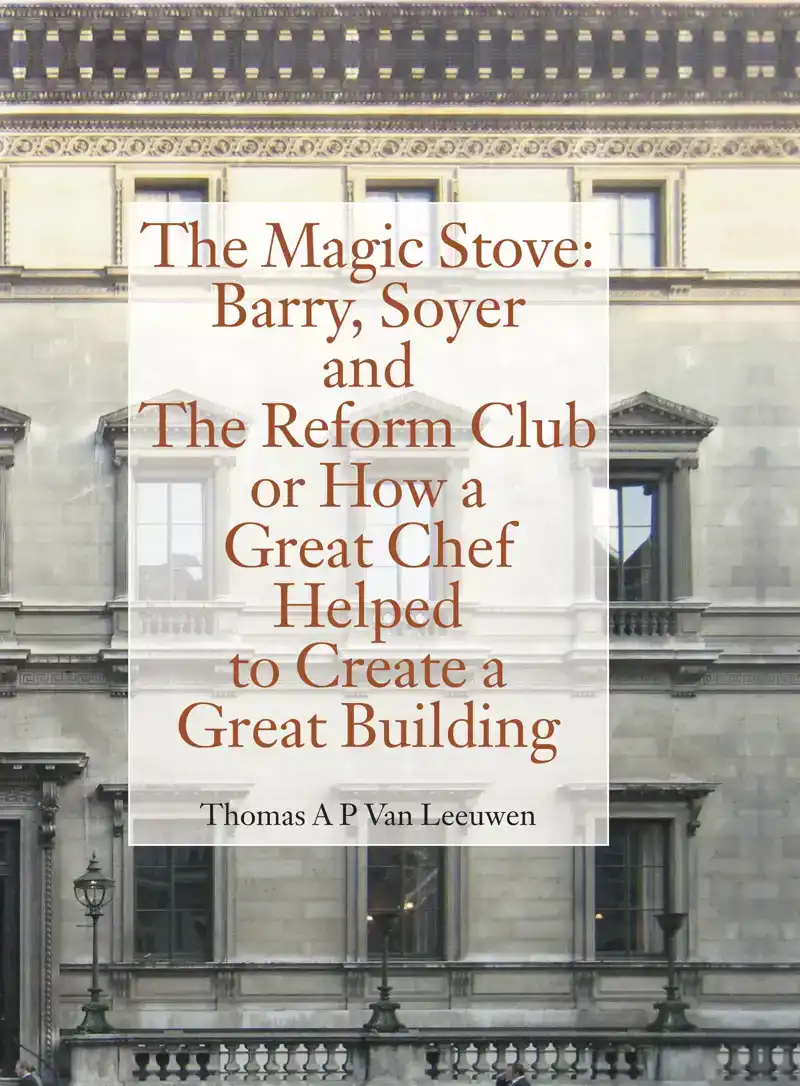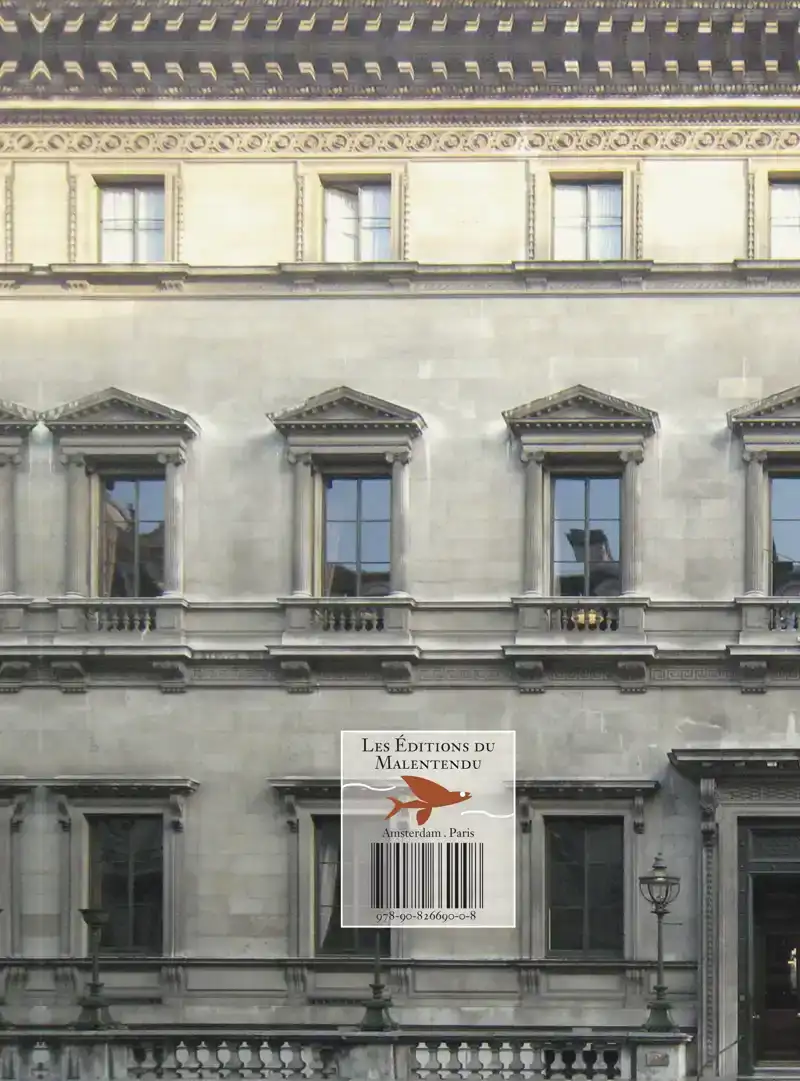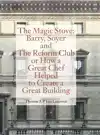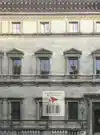- Engels
- Pockets
- kunst algemeen
- bouwkunst, archit.
- THE MAGIC STOVE: BARRY, SOYER AND THE REFORM CLUB OR HOW A G
LEEUWEN, THOMAS A.P. VAN
THE MAGIC STOVE: BARRY, SOYER AND THE REFORM CLUB OR HOW A G
22,00incl BTW
Vertrouwd sinds 1927
Persoonlijke aandacht en advies
Vanaf 17,50 gratis verzenden NL & BE
Meer dan 150.000 artikelen online
Omschrijving THE MAGIC STOVE: BARRY, SOYER AND THE REFORM CLUB OR HOW A G
This little book with the lengthy title The Magic Stove: Barry, Soyer and The Reform Club or How a Great Chef Helped to Create Great Building explores the architecture and technology of the London Reform Club building (1837-1840), a noted but generally misinterpreted work of Charles Barry, Britain''s most famous unknown nineteenth-century architect. Barry''s fame rests mainly on two over-familiar monuments: the Houses of Parliament and Highclere Castle, the decor of television drama Downton Abbey. The other name is Alexis Soyer, almost mythical chef-de-cuisine who introduced not only French style of cooking but also mechanization of food preparation on a large scale, which he first practiced in collaboration with Barry in the design of thefuturistic kitchen of the Reform Club. The result was a machine like building of pro to-fire-proofing construction, in which a steam engine drove the spits of the kitchen, smoke and cooking odors were evacuated by a primitive form of air-conditioning and in which gas was introduced not just for lighting but for the first time for cooking. Contemporary visiting French architecture critic Cesar Daly called the building ''almost a living being''.
About the author: Thomas A P Van Leeuwen was professor of architectural history, cultural history and art criticism at Leiden University and at The Berlage Institute, Rotterdam, for many years. He had done research and taught at various post-graduate schools in Europe and the United States.He was Fellow of the American Council of Learned Societies, Harkness and Fulbright Fellow and Senior Fellow at the Center for Advanced Study in the Visual Arts, Washington DC.
Van Leeuwen''s approach to architectural history is mildly idiosyncratic. Contrary to regular practice, the Van Leeuwen method first strips down the architectural object to its smallest possible particle and then fans out to the widest possible ramifications. The Springboard in the Pond: An Intimate History of the Swimming Pool (1998) started off in architecture''s atomic beginnings as a simple hole in the ground in order to culminate in excursive explorations into man''s conflicting attitudes toward water. Columns of Fire: The Un-doing of Architecture, the third volume, largely published as articles in ea. Cabinet Magazine, Harvard Design Magazine and Hunch, describes architecture''s passionate relationship with fire. Fire the builder-Fire the destroyer. The London Reform Club House is part of this volume, since it was the first semi-public building in the United Kingdom to be constructed of fire-proof construction. That its kitchens were fired by ultra modern gas cooking ranges was not only an unprecedented improvement, but also a demonstration of the fact that the element Fire has two opposite characters. As an enthusiastic Reformer, Van Leeuwen had access to the building''s entrails where he found traces of its smallest common denominator, a one-horse-power steam engine that drove its cooking and ventilation works.
Thomas A P Van Leeuwen''s books also include a historical analysis of the contradictory ascent of the tall building The Skyward Trend of Thought: Metaphysics of the American Skyscraper (1986). These studies are part of a tetralogy with each volume centred on the relationship between architecture and one of the classical elements: Air, Water, Fire and Earth. The last volume deals with Earth: The Thinking Foot: A Pedestrian View of Architecture, an inquiry into the undervalued qualities of Surface, demonstrated by a history of paving and the various consequences of hard superficiality.
About the author: Thomas A P Van Leeuwen was professor of architectural history, cultural history and art criticism at Leiden University and at The Berlage Institute, Rotterdam, for many years. He had done research and taught at various post-graduate schools in Europe and the United States.He was Fellow of the American Council of Learned Societies, Harkness and Fulbright Fellow and Senior Fellow at the Center for Advanced Study in the Visual Arts, Washington DC.
Van Leeuwen''s approach to architectural history is mildly idiosyncratic. Contrary to regular practice, the Van Leeuwen method first strips down the architectural object to its smallest possible particle and then fans out to the widest possible ramifications. The Springboard in the Pond: An Intimate History of the Swimming Pool (1998) started off in architecture''s atomic beginnings as a simple hole in the ground in order to culminate in excursive explorations into man''s conflicting attitudes toward water. Columns of Fire: The Un-doing of Architecture, the third volume, largely published as articles in ea. Cabinet Magazine, Harvard Design Magazine and Hunch, describes architecture''s passionate relationship with fire. Fire the builder-Fire the destroyer. The London Reform Club House is part of this volume, since it was the first semi-public building in the United Kingdom to be constructed of fire-proof construction. That its kitchens were fired by ultra modern gas cooking ranges was not only an unprecedented improvement, but also a demonstration of the fact that the element Fire has two opposite characters. As an enthusiastic Reformer, Van Leeuwen had access to the building''s entrails where he found traces of its smallest common denominator, a one-horse-power steam engine that drove its cooking and ventilation works.
Thomas A P Van Leeuwen''s books also include a historical analysis of the contradictory ascent of the tall building The Skyward Trend of Thought: Metaphysics of the American Skyscraper (1986). These studies are part of a tetralogy with each volume centred on the relationship between architecture and one of the classical elements: Air, Water, Fire and Earth. The last volume deals with Earth: The Thinking Foot: A Pedestrian View of Architecture, an inquiry into the undervalued qualities of Surface, demonstrated by a history of paving and the various consequences of hard superficiality.
Specificaties
- MerkStichting Les éditions du malentendu
- GroepKUNST ALGEMEEN (640)
- Barcode9789082669008
- LeverstatusActief
Reviews
0.0/5.0
Gemiddelde uit 0 reviews
Meest behulpzame reviews
Nog geen reviews geschreven




